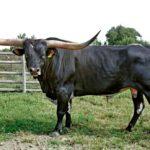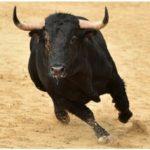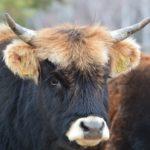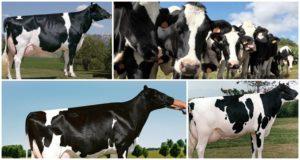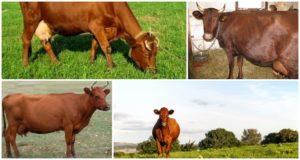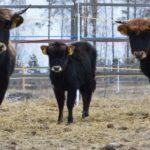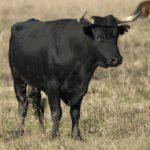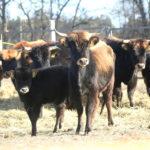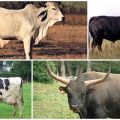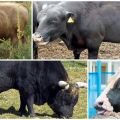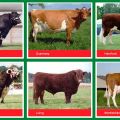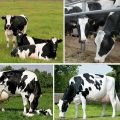Description and habitat of the primitive bulls of the rounds, attempts to recreate the species
Tours are primitive extinct bulls. This is a wild population, representatives of which are considered the ancient ancestors and progenitors of the modern cow. The closest relatives are African watussi bulls, whose appearance is as much as possible identical to the disappeared relatives. You can find out what the real tours looked like only by reconstructions, since no real photos of bulls have survived.
Origin of the species and description
Eurasian tours are artiodactyl mammals from the bovids family. They appeared in the second half of the Anthropogenic period (about 2 million years ago). They spread and populated the territory of Europe, North Africa, Asia. Individuals were the largest animals after the ice age. Tur is the ancient ancestor of modern cattle.
It was possible to restore what the ancient bull looks like using the found bone structures and drawings of naturalists:
- Muscular powerful physique, elongated body shape.
- Dimensions of an adult bull: length - 3 m, height - about 1.8 meters, weight - 800-1100 kilograms.
- Compact head size. The shape is elongated.
- One meter wide pointed horns giving a frightening look.
- Adult bulls were black or black and brown, with light stripes on their backs. Females, young animals were brown or reddish in color.
- The presence of a small hump on the shoulder of the body.
- The cows had small udders, completely hidden in thick fur. In comparison with modern individuals, the udder of female aurochs was poorly developed.
The primitive bull had many virtues to help it survive. It is dense wool, hardy disposition, unpretentiousness and feeding on pasture. Individuals quickly adapted to different natural conditions: they lived in a forest zone, open steppe and even in swampy areas. Females were distinguished by high fertility (reproduced offspring annually).
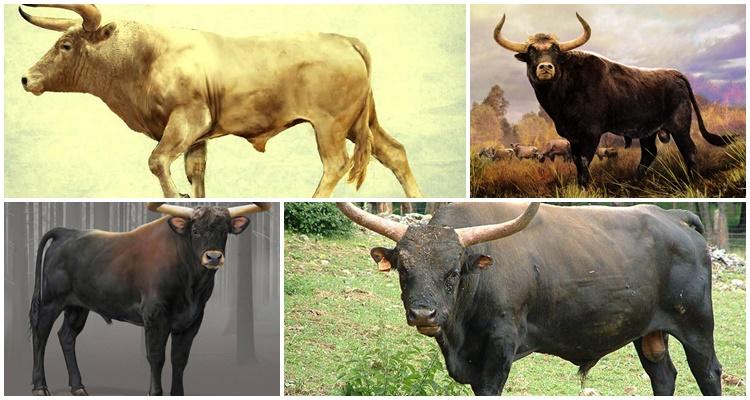
Where did you live and what did you eat?
Initially, the tours lived on the banks of the Nile, gradually inhabiting Africa, India, Pakistan. Later, bulls appeared on the territory of Asia Minor, northern regions of Africa, Europe. In Africa, the population of tours was destroyed even before our era, in Europe, individuals lived until the 16th century:
- Since the 12th century, tours have met in the Dnieper River basin.
- In the 14th century they lived in the impenetrable and sparsely populated forests of Lithuania, Belarus, Poland. Here they were taken under state protection. They became park dwellers.
- By the end of the 15th century, a herd of 24 rounds survived near Warsaw. But by the beginning of the 16th century, this herd had decreased to 4 individuals.
- The last ancient tour died in 1627.
Bulls were completely herbivores. In the summer months, the green steppe vegetation was enough for them.In winter, they moved to the forest area in search of food. Here individuals united in large herds. Due to the beginning of deforestation, the tours often went hungry in the winter, for many of them this was the cause of death.
The nature and lifestyle of the breed
The nature of the tours was mostly calm. They did not attack people and animals, did not lead an aggressive lifestyle. The bulls only became angry when they hunted or needed protection.
Ancient individuals led a herd wild lifestyle. The largest female became the "leader". Young bulls lived separately, freely frolicking and enjoying their youth. Old individuals left for forest thickets, lived separately from the main livestock. Cows with newborn turtles also went deep into the forest, protecting their offspring.
Social structure and reproduction
Mating of wild animals took place in the first month of autumn. During this period, fierce battles between males began, which usually ended in the death of one or both opponents. Females belonged to the strongest members of the herd. There are numerous cases of mating between wild tours and domestic cows. As a result, a non-viable hybrid offspring with poor health was born, which soon died.
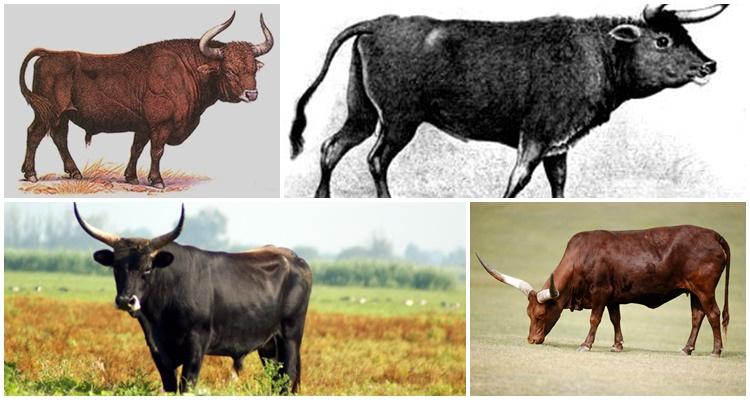
Calving time came in late spring. Pregnant cows, sensing the speed of childbirth, went into the forest, retired into the thicket. Here calves were born, with whom the mother stayed in the thickets for at least 20 days. If the birth occurred at a later date (September), the calves born in the fall did not survive and died by winter.
What are the natural enemies of the animal
The bulls had a powerful and well-developed physique. This served as a frightening signal for most animals in nature. The researchers note that wolves occasionally attacked the aurochs. But the main enemy for the species was man. The constant hunting for wild bulls stretched for hundreds of years. The killed tour became an excellent prey. Carcass meat was the food for a huge number of people.
In historical books, chronicles, many cases of successful bull hunting are recorded. People massively exterminated tours to replenish stocks of meat and fur.
Population and status of the species
Tours refer to an extinct (extinct) species. An active population decline and mass death was recorded in the 14-16 centuries. People of that time tried to save the species: they treated, guarded, fed and brought hay to the forest in winter. But all efforts were in vain. The population decreased and disappeared over time.
Several phenomena contributed to the extinction of the species:
- Rapid progress and rapid development of the woodworking sector have led to intensive deforestation in Europe.
- Consequence of active hunting.
- Man began to interfere with natural phenomena.
- Changing conditions of existence. The last individuals died from the disease. Immunity was unable to adapt to new climatic features.
The last unique specimen was lost in the 16th century. Today, the descendants of these ancient individuals live: Indian, African bulls and other representatives of cattle. Animals inhabit most of the continents. In 1994, it was established that modern cows are not descendants of turs. Scientists have proven that the development and domestication of these animals has a different lineage.
Tour domestication
Only a few descendants of the tour were domesticated. In Spain and other Latin American countries, fighting bulls are raised.It is believed that their purposeful breeding began in the 16-17th century in Valladolid. Fighting bulls are used to participate in bullfighting. Such individuals outwardly resemble tours, but their body sizes are much smaller (weight - up to 0.5 tons, height - no more than 1.5 meters).
Description of the closest relatives of the ancient bull:
| Descendants | Specifications |
| Wild bull | This is the collective name for non-domesticated species from the subfamily bulls. Known subspecies are Indian zebu, watussi. Separation from relatives took place about 300,000 years ago. |
| Fighting bull | Other names are the Lydian bull, toro bravo. They have a phenotype similar to tour. Coat color - black, dark brown. They take part in bullfighting from 4 years old. This is a kind of "small copy" of the ancient round. |
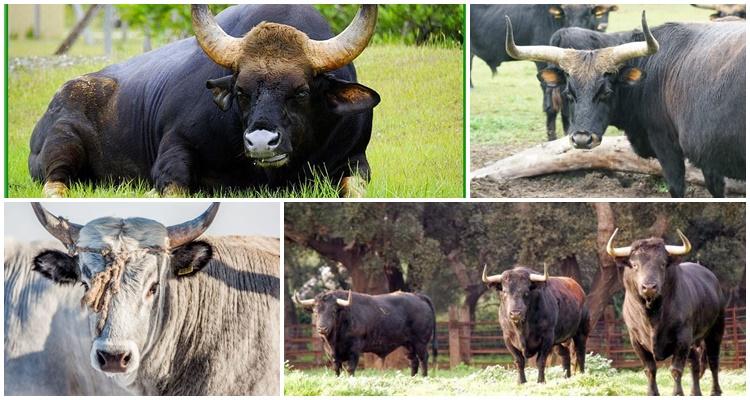
Attempts to recreate the view
The idea of "resurrecting" an extinct population by artificial selection became popular in the 19th century. In 1920 in Germany the brothers Heinz and Hecky carried out a similar work. The result was the breeding of the Heck Bulls. The individuals did not become real tours, but received the maximum similarity in coat color and horn shape.
Similar experiments are being carried out today. Work is underway in the Netherlands, where scientists from the Taurus Foundation want to create an animal that is as close as possible to a tour by backcrossing primitive breeds. In Poland, they plan to recreate an individual from DNA collected from found bones. But the work has not yet been crowned with success. None of the scientists managed to reproduce the wild bull.
Wild bull tour is an extinct animal. The extinction of the population took place in the 16th century, the death of the last representative of the species occurs in 1627. Ancient animals were distinguished by their huge body sizes: the weight of an adult individual reached a ton, the height at the withers was 2 meters. With such a large-scale configuration, the tours were completely herbivores. They ate greenery and shoots, lived in a herd under the command of a female.
The extinction was due to human activities and genetic diseases of the species. Attempts to "resurrect" the population are unsuccessful. The closest relatives are Indian bulls and African watussi.
